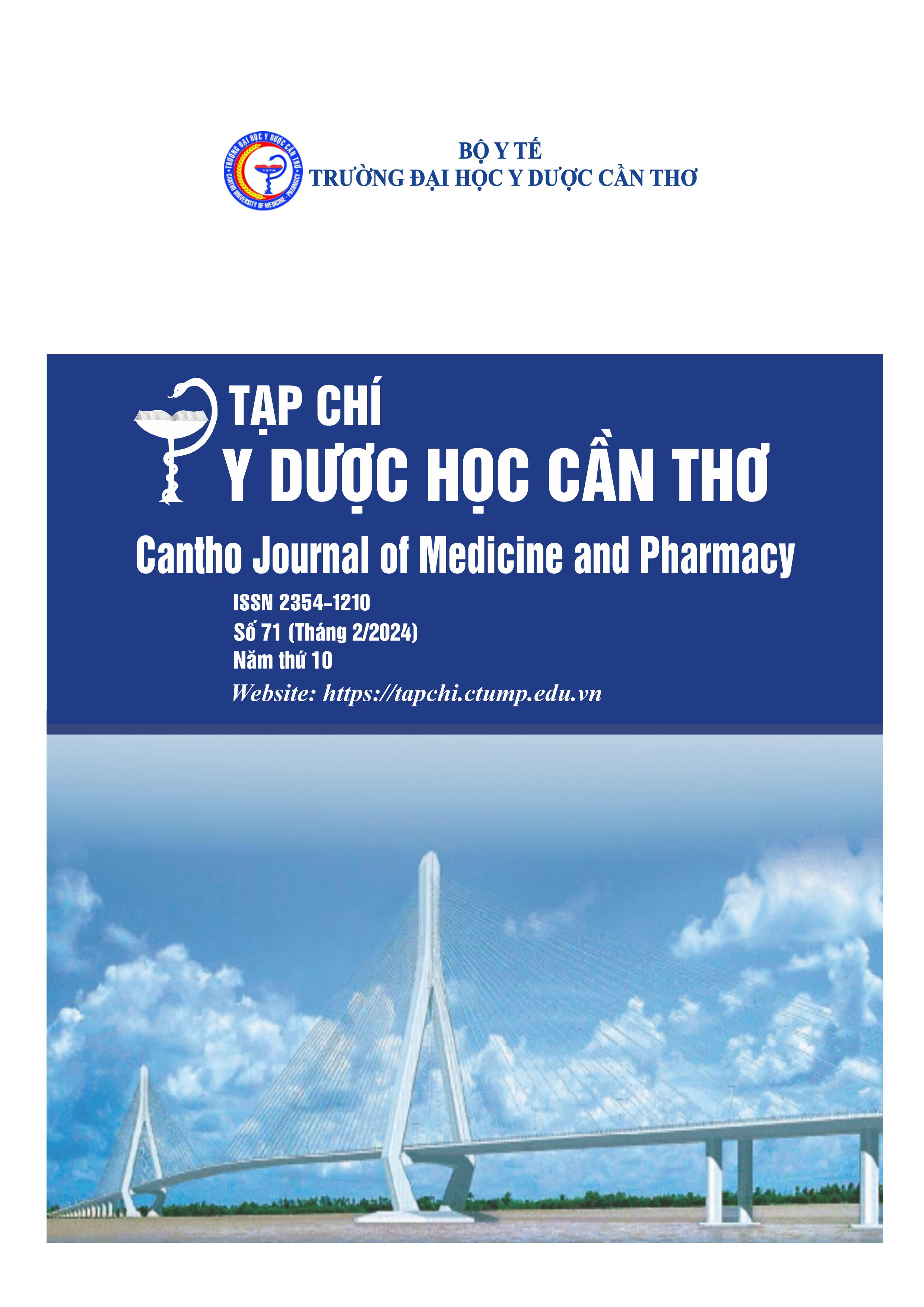RISK OF FALLS IN ELDERLY INPATIENTS AT THE DEPARTMENT OF GENERAL INTERNAL MEDICINE – CAN THO UNIVERSITY OF MEDICINE AND PHARMACY HOSPITAL AND RELATED FACTORS IN 2023
Main Article Content
Abstract
Background: In the elderly, falls are one of the common and important problems, it is one of the leading causes of injury in the elderly and causes future consequences. Objectives: To determine the fall risk level of the elderly and factors related to the fall risk level using the Johns Hopkins scale. Materials and methods: Cross-sectional descriptive study on 98 elderly inpatients at the Department of General Internal Medicine, Can Tho University of Medicine and Pharmacy Hospital. Results: The rate of high risk of falling was 28.6% and low risk of falling was 71.4%. The risk of falling was highest in the 60-69-year-old group, accounting for 44.9%. Factors related to the risk of falling: History of falls (1 time within 6 months), use of antihypertensive drugs, diuretics (with p < 0.05). Conclusions: The risk of falls in elderly patients is quite high. To improve it, there need to be interventions appropriate to the levels and related factors that have been identified to reduce the rate of falls, contributing to improving the quality of treatment and prevention of adverse events for elderly hospitalized patients.
Article Details
Keywords
Falls, the elderly patients, related factors
References
2. WHO. WHO Global Report on Falls Prevention in Older Age. 2007.
3. Bộ Y tế. Thông tư 43/2018/TT-BYT hướng dẫn phòng ngừa sự cố y khoa trong các cơ sở khám bệnh, chữa bệnh. Thư Viện Pháp Luật. 2018.
4. Poe SS, Cvach M, Dawson PB, Straus H, Hill EE. The Johns Hopkins fall risk assessment tool: Post Implementation evaluation. Journal of nursing care quality. 2007. 22(4), 293-298, doi: 10.1097/01.NCQ.0000290408.74027.39.
5. Vũ Ngô Thanh Huyền, Trần Thuỵ Khánh Linh, Faye Hummel. Nguy cơ té ngã ở người bệnh cao tuổi điều trị nội trú và các yếu tố liên quan. Tạp chí Y học TP. Hồ Chí Minh. 2019. 23(5), 133-139.
6. Martinez MC, Iwamoto VE, Latorre MRDO, Simoes AMN, Oliveira APS, et al. Validity and reliability of the Brazilian version of the Johns Hopkins Fall Risk Assessment Tool to assess the risk of falls. Revista Brasileira de Epidemiologia. 2019. 22, e190037, doi: 10.1590/1980-549720190037.
7. Damoiseaux-Volman, Schoor NM, Medlock S, Romijn JA, Velde N, et al. External validation of the Johns Hopkins Fall Risk Assessment Tool in older Dutch hospitalized patients. European geriatric medicine. 2023. 14(1), 69-77, doi: 10.1007/s41999-022-00719-0.
8. Gottschalk S, König HH, Schwenk M, Jansen CP, Nerz C, et al. Mediating factors on the association between fear of falling and health-related quality of life in community-dwelling German older people: a cross-sectional study. BMC geriatrics. 2020. 20(1), 1-11, doi: 10.1186/s12877-020-01802-6.
9. Ellmers TJ, Kal EC, Richardson JK, Young WR. Short-latency inhibition mitigates the relationship between conscious movement processing and overly cautious gait. Age and ageing. 2021. 50(3), 830-837, doi: 10.1093/ageing/afaa230.
10. Mata L, Azevedo C, Policarpo AG, Moraes JT. Factors associated with the risk of fall in adults in the postoperative period: a cross-sectional study. Rev Lat Am Enfermagem. 2017. 25, e2904, doi: 10.1590/1518-8345.1775.2904.
11. Falcao RMM, Costa K, Fernandes M, Pontes MLF, Vasconcelos JMB, et al. Risk of falls in hospitalized elderly people. Rev Gaucha Enferm. 2019. 40(spe), e20180266, doi: 10.1590/19831447.2019.20180266.


